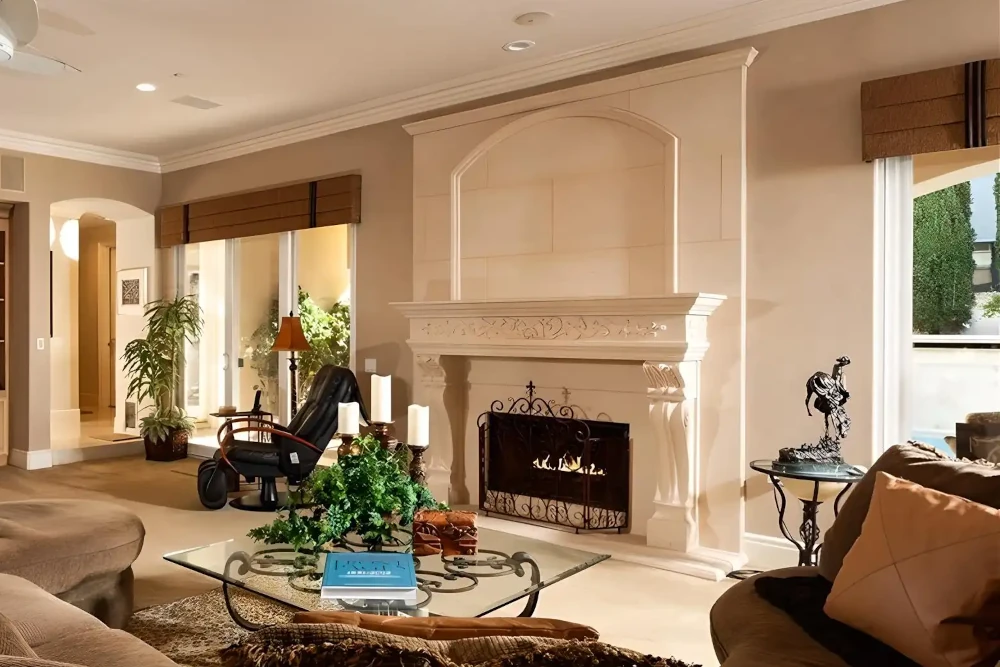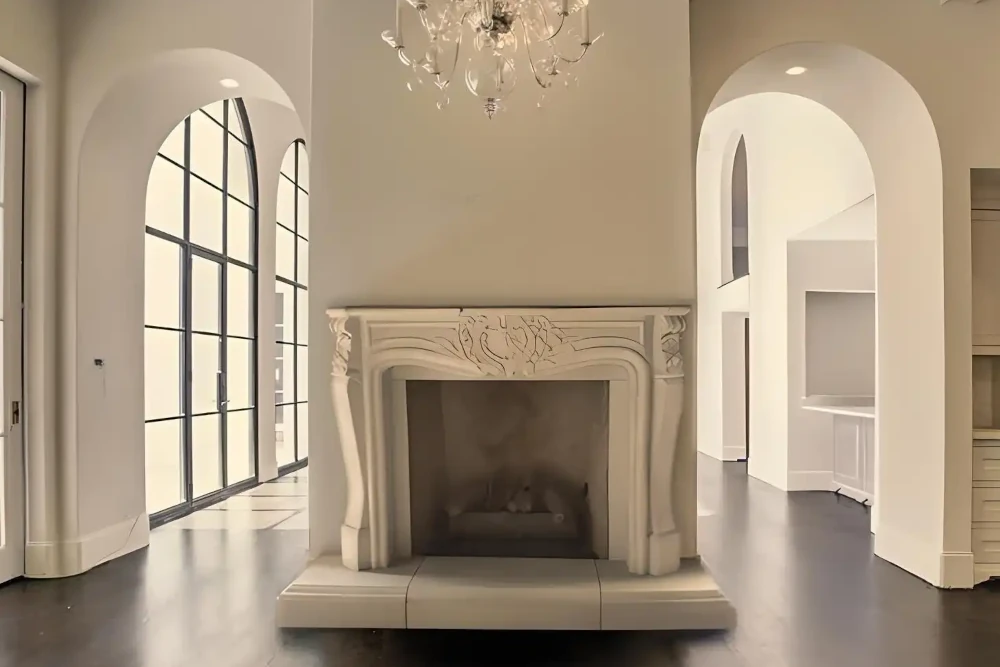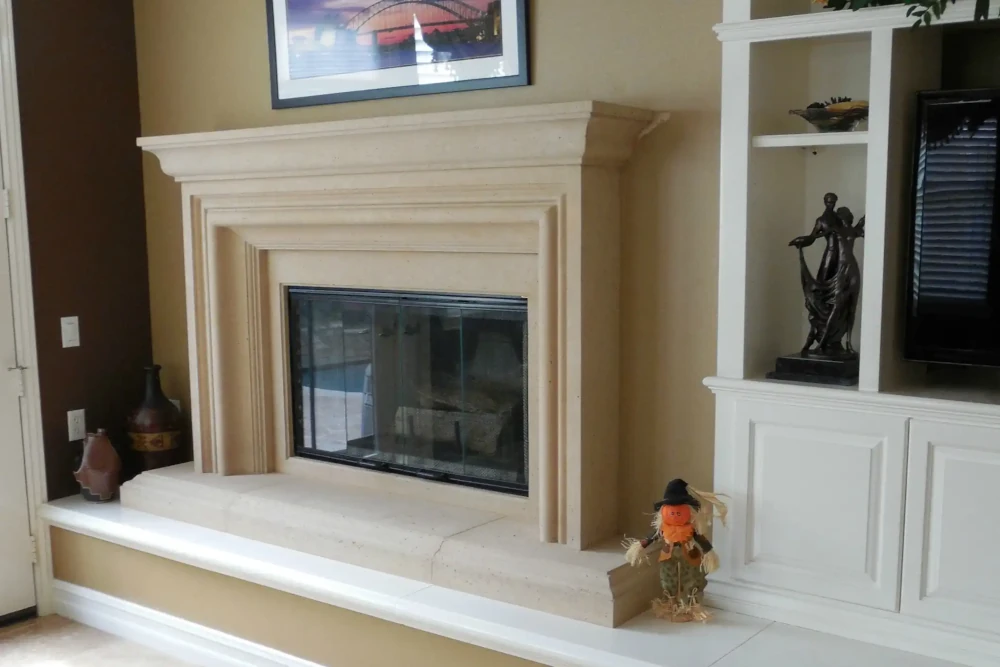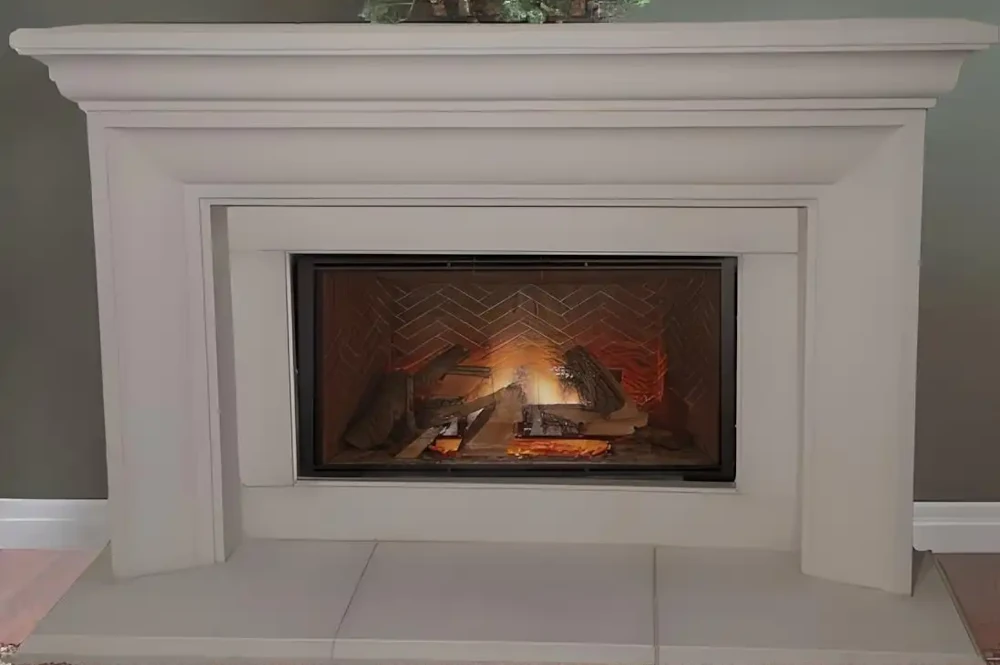by studiodesignworks
Share
by studiodesignworks
Share
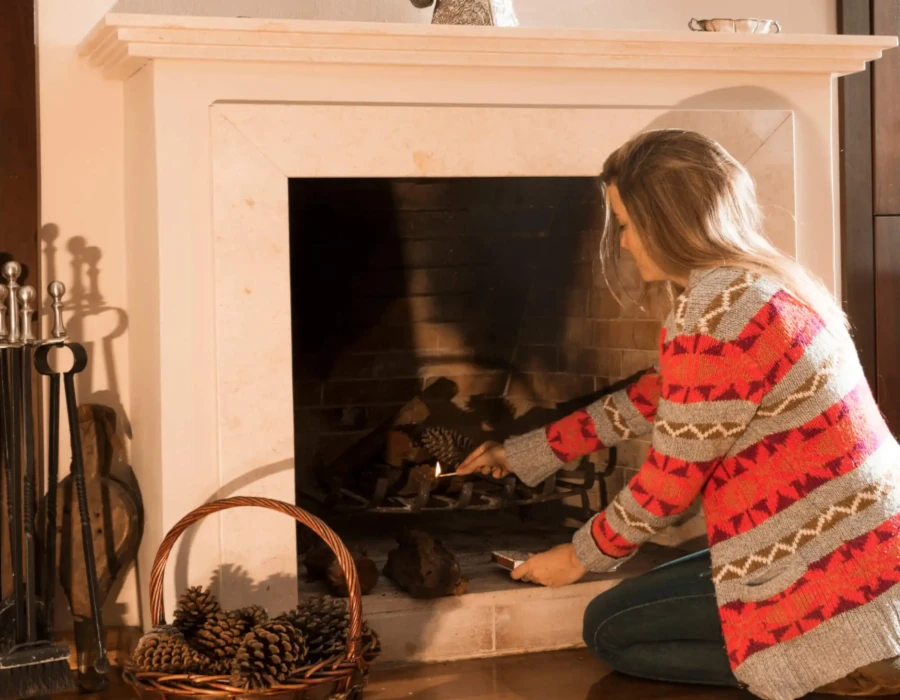
When it comes to fireplace surrounds, homeowners are faced with a myriad of options, each with its own unique characteristics and benefits. Cast stone, a versatile and durable material, has gained popularity as an attractive alternative to natural stone for fireplace surrounds. In this comprehensive article, we delve into the qualities of cast stone and examine its suitability for use in fireplace installations, exploring its benefits, drawbacks, and considerations for homeowners seeking to enhance the aesthetic appeal and functionality of their living spaces.
Understanding Cast Stone: Composition and Characteristics
Cast stone, also known as architectural precast concrete, is a manufactured material designed to replicate the appearance and texture of natural stone. Composed of fine aggregates, cementitious materials, and mineral oxides for coloration, cast stone is cast into molds and cured to achieve the desired shape, texture, and finish. The result is a versatile material that closely resembles the aesthetic qualities of natural stone while offering greater consistency, affordability, and design flexibility.
Benefits of Cast Stone for Fireplace Surrounds
Aesthetic Versatility
Cast stone can be customized to emulate a wide range of natural stone varieties, including limestone, travertine, marble, and granite. With the ability to incorporate intricate details, textures, and architectural elements, cast stone fireplace surrounds offer endless design possibilities to complement any interior style, from traditional to contemporary.
Durability and Longevity
Unlike natural stone, which may vary in density and porosity, cast stone is engineered for consistent strength, durability, and resistance to environmental factors such as moisture, temperature fluctuations, and UV exposure. This inherent durability ensures that cast stone fireplace surrounds maintain their aesthetic appeal and structural integrity over time, with minimal maintenance requirements.
Cost-Effectiveness
Cast stone fireplace surrounds offer a more affordable alternative to natural stone, providing homeowners with the opportunity to achieve the look of luxury at a fraction of the cost. With lower material and installation expenses compared to genuine stone, cast stone presents an attractive option for budget-conscious homeowners seeking to enhance their living spaces without compromising on quality or style.
Ease of Installation
Cast stone fireplace surrounds are typically lighter in weight than natural stone counterparts, making them easier to handle, transport, and install. This lightweight nature reduces labor costs and simplifies installation processes, particularly in retrofit or renovation projects where structural considerations may be a factor.
Consistency and Uniformity
Unlike natural stone, which may exhibit variations in color, veining, and texture from one piece to another, cast stone offers uniformity in appearance, ensuring consistent coloration, surface finish, and dimensional accuracy throughout the fireplace surround. This consistency facilitates seamless integration with other architectural elements and enhances the overall aesthetic cohesion of the space.
Considerations and Drawbacks of Cast Stone
- Appearance: While cast stone closely mimics the appearance of natural stone, discerning eyes may still be able to differentiate between the two materials upon close inspection. Some homeowners may prefer the authenticity and character of genuine stone, making cast stone a matter of personal preference in terms of aesthetic appeal.
- Limited Customization: While cast stone offers a high degree of design flexibility, certain intricate or highly customized designs may be challenging to achieve with this material. Complex architectural details or unique textures may require specialized molds or additional fabrication processes, potentially increasing production costs and lead times.
- Maintenance Requirements: While cast stone is generally low-maintenance compared to natural stone, it may still require periodic cleaning and sealing to preserve its appearance and protect against staining, moisture absorption, and environmental degradation. Proper care and maintenance practices are essential to ensure the longevity and aesthetic integrity of cast stone fireplace surrounds.
Conclusion: Is Cast Stone Good for Fireplaces?
In conclusion, cast stone offers a compelling combination of aesthetic appeal, durability, affordability, and design versatility that makes it well-suited for fireplace surrounds. With its ability to replicate the look and feel of natural stone while offering greater consistency, cost-effectiveness, and ease of installation, cast stone presents an attractive option for homeowners seeking to enhance the beauty and functionality of their living spaces. By weighing the benefits, drawbacks, and considerations outlined in this article, homeowners can make an informed decision regarding the suitability of cast stone for their fireplace surround projects, ensuring a timeless and elegant addition to their homes.
Visit Studio Design Works – Cast Stone Products if you’re seeking for cast stone for fireplace surrounds. The store can be contacted by phone at (949) 627-5926 or by filling out this form.
STAY IN THE LOOP
Subscribe to our free newsletter.
Leave A Comment
In today’s world, environmental sustainability is a crucial consideration in almost every aspect of life, including home construction and interior design. One area where sustainable choices can make a significant impact is in the selection […]
A fireplace mantel serves as the focal point of a room, adding character, charm, and architectural interest to the space. When it comes to cast stone fireplace mantels, the possibilities for customization are virtually endless. […]
The fireplace mantel has been a symbol of warmth, comfort, and architectural beauty for centuries, serving as the focal point of countless homes around the world. Among the various materials used for fireplace mantels, cast […]
Choosing the right material for a fireplace mantel is a crucial decision that impacts both the aesthetic appeal and functionality of a home. Among the various options available, cast stone is a popular choice due […]

